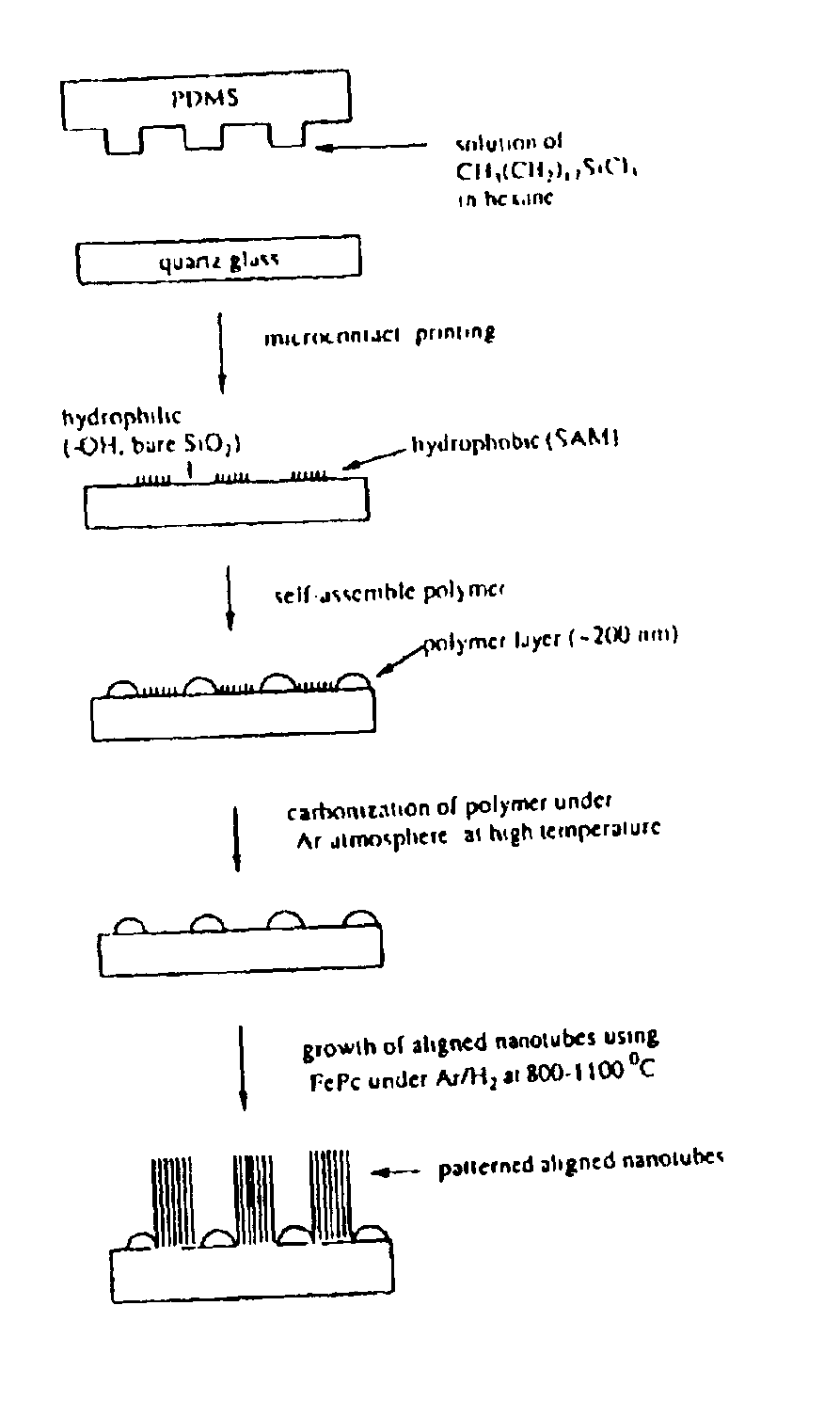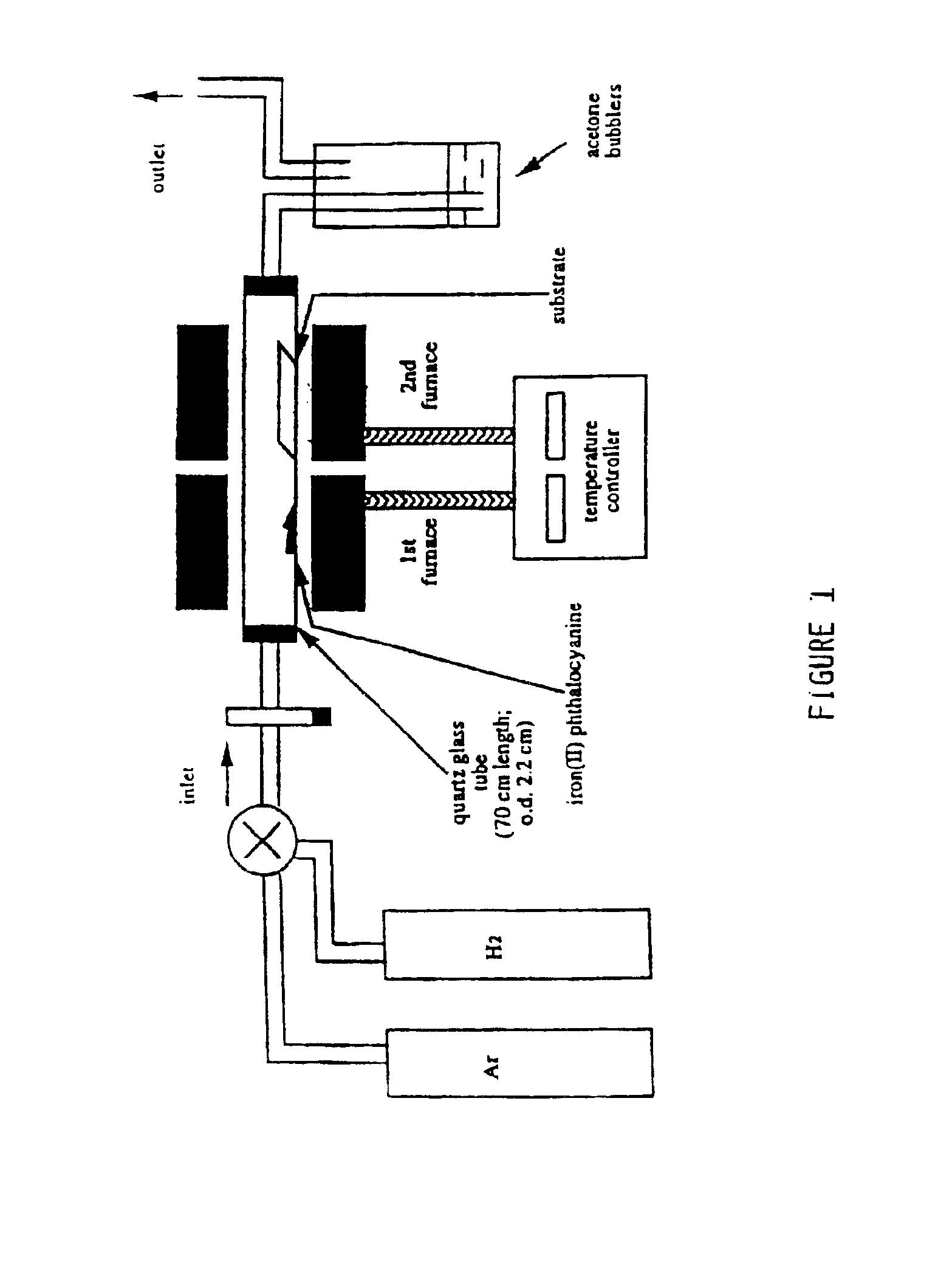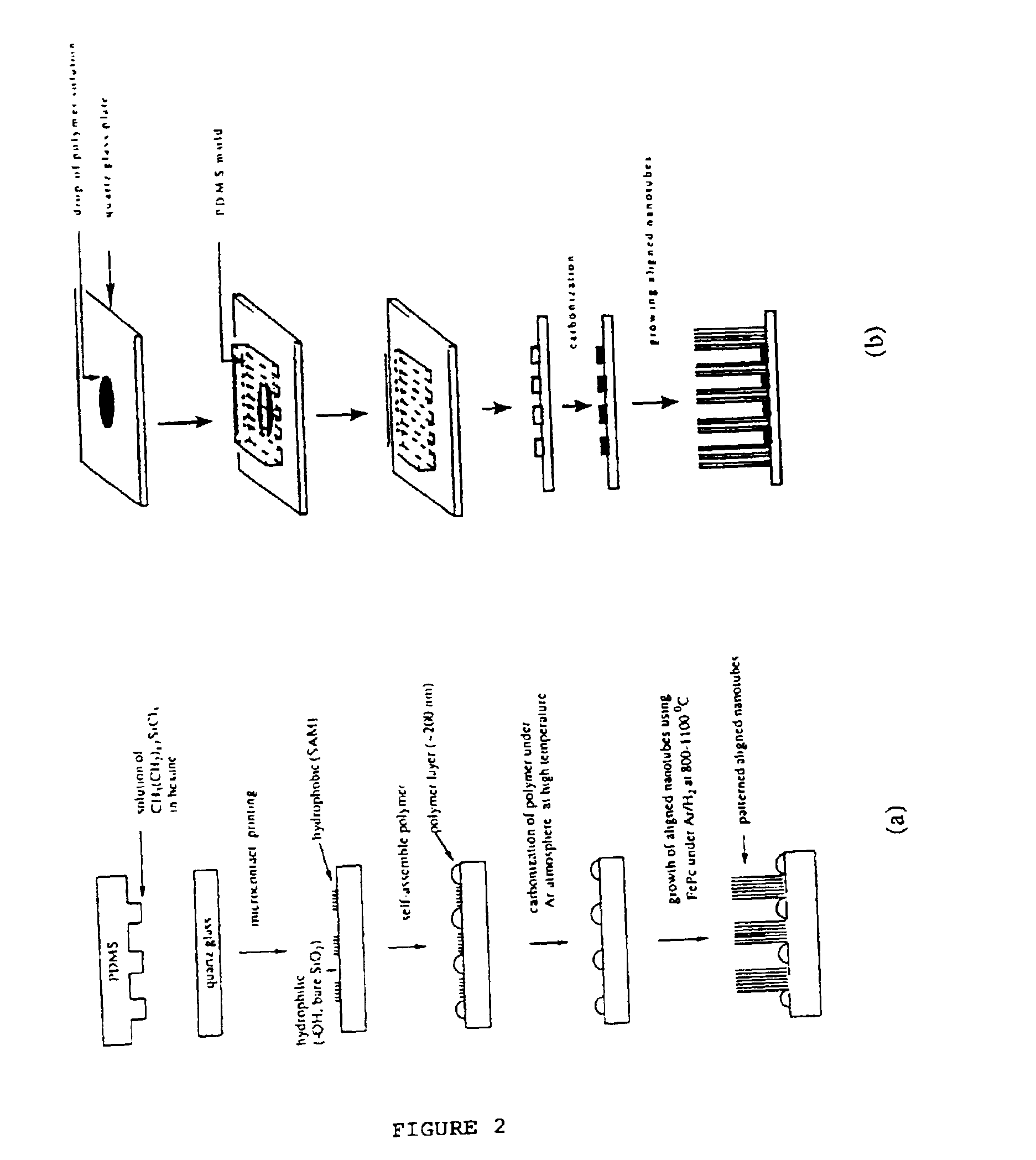Process for making aligned carbon nanotubes
a carbon nanotube and aligning technology, applied in the direction of crystal growth process, energy-based chemical/physical/physical-chemical process, chemically reactive gas, etc., can solve the problem of major challenge for researchers to find ways to control the arrangement of carbon nanotubes
- Summary
- Abstract
- Description
- Claims
- Application Information
AI Technical Summary
Benefits of technology
Problems solved by technology
Method used
Image
Examples
example 1
Quartz glass plates were cleaned by heating in a Pianha solution (a mixture of 98% H2SO4 and 30% H2O2 at 7:3 v / v) at 70° C. for ca. 30 min, followed by thoroughly rinsing with deionized water. PDMS stamp was used for patterning an octadecyltrichlorosiloxane (OST) SAM layer on the cleaned quartz surface. After the contact transfer of the “ink” (i.e. 0.2% w / w of OST in hexane), the PDMS stamp was left in contact with the substrate for 15-30 seconds, and the patterned substrate was then immersed into a diazonaphthoquinone (DNQ)-modified cresol novolak photoresist solution (0.5˜1.0 mg / ml) in ethoxyethyl acetate / acetone (1 / 10˜1 / 5 v / v) for ca. Is for selective absorption of the polymer into the OST-free regions. The polymer prepatterned quartz plate was heated at high temperature under Ar atmosphere to carbonize the photoresist polymer into a carbon layer. The carbonization was carried out be heating the patterned DNQ-novolak photoresist coating at 150° C., 300° C., 500° C., 700° C. and 9...
example 2
A drop of the DNQ-novolak photoresist in the ethoxyethyl acetate / acetone (15˜20% w / w) was spread on a quartz plate, and PDMS stamp was then pressed on the polymer coated quartz surface. After having dried in an oven at 80-100° C. for about 30 min, the PDMS stamp was removed leading to a polymer-patterned substrate. The polymer prepatterned quartz plate was heated at high temperature under Ar atmosphere to carbonize the photoresist polymer into a carbon layer. The carbon nanotube patterns were then prepared by selectively growing aligned nanotubes in the photoresist-free regions by pyrolysis of FePc under Ar / H2 at 800-1000° C.
DNQ-novolak photoresist patterns were prepared by the solvent-assisted micro-molding (SAMIM) method illustrated in FIG. 1b. The structure of the PDMS mold used in this study is shown in FIG. 3a, while the corresponding SEM image of the resulting photoresist pattern is given in FIG. 3b. Prior to the region-specific growth of aligned nanotubes by pyrolysis of FePc...
PUM
| Property | Measurement | Unit |
|---|---|---|
| Temperature | aaaaa | aaaaa |
| Temperature | aaaaa | aaaaa |
| Fraction | aaaaa | aaaaa |
Abstract
Description
Claims
Application Information
 Login to View More
Login to View More - R&D
- Intellectual Property
- Life Sciences
- Materials
- Tech Scout
- Unparalleled Data Quality
- Higher Quality Content
- 60% Fewer Hallucinations
Browse by: Latest US Patents, China's latest patents, Technical Efficacy Thesaurus, Application Domain, Technology Topic, Popular Technical Reports.
© 2025 PatSnap. All rights reserved.Legal|Privacy policy|Modern Slavery Act Transparency Statement|Sitemap|About US| Contact US: help@patsnap.com



